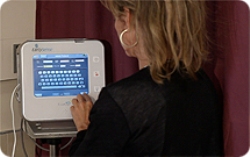EarlySense, a provider of proactive patient care technologies, has declared that the company’s non-contact patient monitoring device can be significantly used as a risk assessment tool for preventing the occurrence of pressure ulcers, using the results of post regulatory approval clinical and interventional studies, which was released in the Journal of Patient Safety issued in December 2011.
 EarlySense’s bedside monitoring set up
EarlySense’s bedside monitoring set up
The pressure ulcer study results’ overview was presented in a poster abstract at the 2011 ISQua conference held in Hong Kong.
The company’s patient monitoring system was approved with FDA and CE mark for use in home, clinics and hospitals. This system integrated with a small sensor fixed under the patient’s mattress ensures the continuous and automatic recording and documentation of their respiratory, motion and cardiac parameters. The fixed sensor performs alerting of the nurse, when it senses significant changes in their measured parameters, bed entries and exits and patient’s body turn, by transferring the sensed data through a wired or wireless interface to the monitoring system kept at the nurse’s station so as to avoid pressure ulcers.
A non-interventional study was performed with 110 patients, whose movements were recorded and analyzed retrospectively, in two separate medical departments at two different centers. The evaluation of the company’s non-contact bedside monitoring device implemented in the 33-bed medical-surgical system was performed by conducting an interventional study at a US hospital. About 65% reduction in the occurrence of pressure ulcers was determined by the researchers using the clinical study data of pre- and post-implementation period. About 88% of the nurses, who were employed routinely on the floor confirmed that the alert signal from the patient monitoring device helped them to reduce the incidence of pressure ulcers.